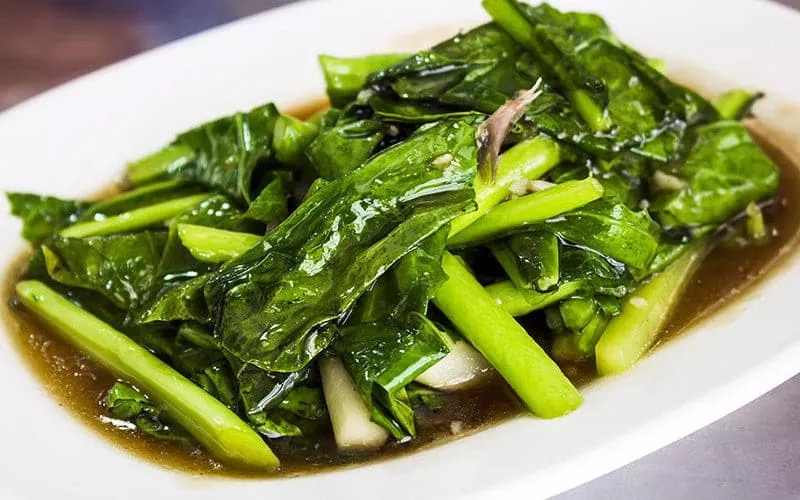News
Leafy Green Vegetables
We should all be eating more leafy green vegetables. We know this. It’s drummed into most of us from a very young age. So why? In that case, don’t we eat enough leafy green vegetables? This we can’t answer, but what we can do is explain more about why they are suitable for us and which ones to keep a remarkable eye out for.
With different cooking methods from around the world, like stir-frying and flash frying, becoming more commonplace in our homes, there are new ways to prepare green leafy vegetables to make them more appealing for adults and children alike.
List of Green Vegetables
Straight out of the trap, here’s a list of green vegetables together, along with some information about each. These are not in any order of nutritional value:
- Water Spinach – known as ‘ong choy’ in China, ‘pak boong’ or ‘morning glory’ in Thailand, is usually served flash fried or stir-fried with chilli, garlic, fish sauce and seasonings. It is a straightforward and delicious dish, high in vitamins A & B6 and a whole host of mineral compounds. In addition, studies have proved it has blood sugar-lowering qualities.
- Chinese Cabbage – known as ‘bok choy’ or ‘pak choy’- is a staple in Eastern cooking, quickly stir-fried or added to raw soups and salads. One serving provides us with 100% of our vitamin A RDA and 60% of our vitamin C, as well as good helpings of iron & magnesium.
- Broccoli – needs no introduction. We all know how good it is for us. Try tossing it with finely chopped garlic, olive oil, salt & pepper and then roasting it for 20 mins. A very balanced and complete green leafy vegetable, it contains high levels of vitamin C and lots of fibre, as well as a host of other vitamins and minerals, making it one of the most nutritious green vegetables.
- Iceberg lettuce – commonly known as just lettuce, a versatile green leafy vegetable, great in salads or as a garnish. Some are concerned about its lack of nutrients and low calories, but iceberg can hold its own in the nutrition department, a 100g serving clocks up the following:
-
- \20% (RDA)vitamin K
- 148% (RDA) vitamin A
- 15% vitamin
- Kale – a leafy green vegetable that stands toe to toe with any other in the nutritional ring. There are many different realities, and all with similar dietary goodness. An everyday staple in the East and Orient, kale is versatile and delicious; boiled, baked or stir-fried. Kale has been mooted in a few corners as ‘the world’s healthiest vegetable’. A 100-gram pack of 200% of our RDA for vitamins A & C and reasonable quantities of vitamin B6, calcium, iron, magnesium, potassium and proteins.
Other great leafy green vegetables that are readily available and suitable for us are:
- sprouts
- Spinach
- Swiss Chard
- Radicchio
- Sea Kale
- Cress
- Asparagus
- Artichokes
- Ceylon Spinach
- Collard Greens
This isn’t a definitive list; we will write more about the vegetables listed above and more in the coming articles.
Dark Green Vegetables
Dark green vegetables are another category of veg over and above ‘standard’ vegetables. The nutritional properties of the darker green veg tend to vary slightly. They tend to have a couple of extra nutrients derived from their darker colour, which is caused by an abundance of chlorophyll.
A List of Dark Green Vegetables
Here is a list of vegetable that is considered dark green vegetables. However, this, again, isn’t a definitive list.
- Kale
- Mustard Greens
- Broccoli
- Collard Greens
- Spinach
Dark green vegetables as well as contain lots of great vitamins and minerals. In addition, they also have an abundance of other compounds, such as:
- Carotenoids – an antioxidant that helps the body fight free radicals, protect cells and block the early stages of cancer.
- Vitamin K – helps build strong bones and protects against diseases such as osteoporosis & inflammatory conditions.
- Folate or folic acids – helps the heart stay strong and fight disease, prevent specific congenital disabilities and DNA duplication, which is necessary for the body to prevent cancer from forming, especially in breasts, lungs, the cervix and the colon.
Because of the high levels of antioxidants, vitamins and minerals that dark green leafy vegetables have, they are accredited with being the best food for cancer and heart disease prevention.
So tuck in…

